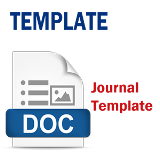LAND COVER CLASSIFICATION WITH OBIA METHOD (OBJECT BASED IMAGE ANALYSIS) IN PADANGWEST DISTRICT, PADANG CITY
Abstract
High population growth has an impact on the development of a region. Therefore, the need for the latest information regarding land cover obtained through data processing using remote sensing techniques. This land cover monitoring utilizes object-based SPOT 7 satellite imagery data (OBIA) in West Padang District, Padang City. This research was conducted with the aim of knowing the level of accuracy of the OBIA method in land cover classification on SPOT 7 Imagery. The OBIA method consists of two stages, namely segmentation and classification with the Train Maximum Likelihood Classifier algorithm. In this study, there were 10 land cover classifications and resulted in an overall accuracy of 95% and a kappa accuracy of 94%.







